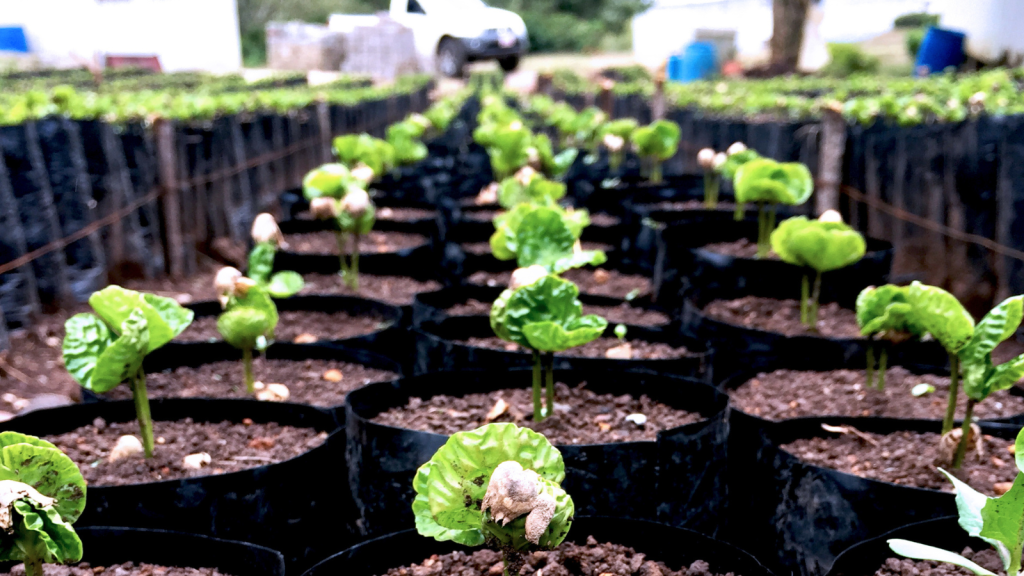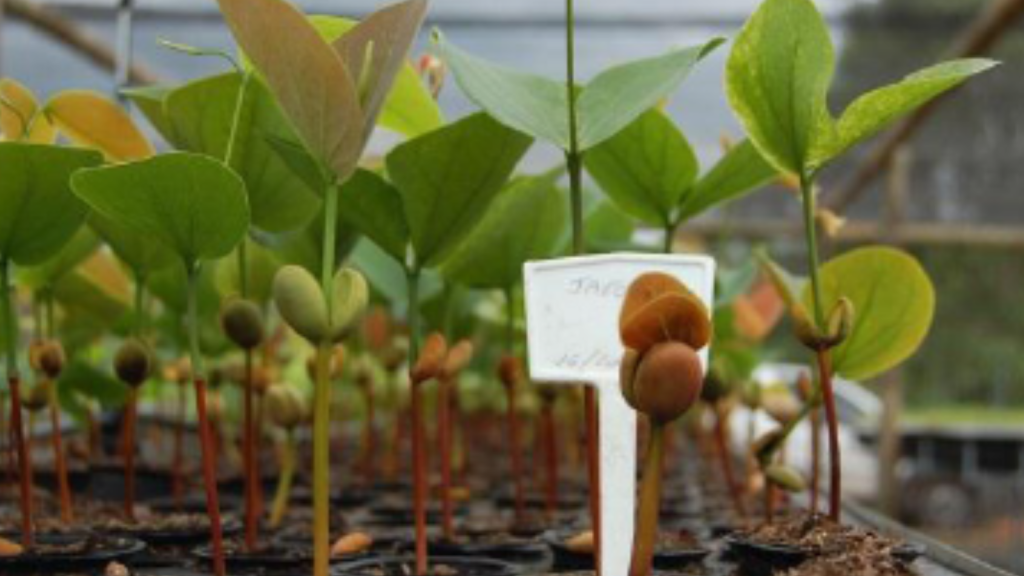In this post we explore the exciting possibility of growing coffee in the comfort of your own home. Yes, you read that correctly – you can have your very own coffee plant flourishing within your four walls! You probably don’t have the acreage to have a robust coffee harvest and this will definitely be a years-long project if you want to see some red ripe cherries burst forth, but you love coffee and growing it will only make that bond stronger. Let’s discover how.To grow your own coffee at home start, selecting the right coffee variety is paramount. Arabica coffee plants are particularly well-suited for indoor cultivation, as they adapt well to lower light conditions.

Coffee nursery in Costa Rica
To create optimal coffee-growing conditions, it is important to understand the needs of coffee plants. Originally hailing from tropical regions, coffee require a replication of those conditions indoors. Here are some key factors to consider:
- Temperature: Coffee seeds need temperatures of 77°F in the germination phase. After that, aim for a temperature range of 64-73°F. Avoid exposing the coffee plants to drafts or extreme heat, which could harm them.
- Light: Coffee plants require bright, indirect light. Place them near a south-facing window to receive 6-8 hours of filtered sunlight each day. In cases of limited natural light, additional plant lights can be used.
- Humidity: Moderate humidity levels are ideal for coffee plants. Occasionally mist the leaves with water or place a water tray nearby to increase humidity.
- Watering: Keep the soil consistently moist but not overly saturated. Be mindful of not overwatering, as it can lead to root rot.

Coffee seedlings beginning to grow
Preparing the Pot for Your Coffee
- Choose flower pots or seed trays with drainage holes at the bottom.
- Ensure that the containers are large enough to accommodate the coffee plant as it grows.
- Fill the containers with seed starting soil.
Planting the Coffee Beans
- Take the parchment (coffee beans) and individually insert them into the soil, with the slit facing downwards, approximately 3-4 cm deep.
- Make sure each coffee bean has enough space and that they are not touching other beans.
Placement and Germination
- Place the planting containers in a sunny location or on a win-dowsill with a radiator underneath.
- Coffee seeds require a temperature of around 77°C during the germination phase.
- Keep the soil lightly moist to support germination.
- After a few weeks, the seedling will emerge from the soil.
Location and Care
- Coffee plants thrive best in a bright, airy location without direct sunlight.
- In the summer, fresh air is beneficial, even if there is occasional draft.
- In winter, the plant can tolerate room temperatures starting from 64°C, but cooler locations are not harmful.
Watering
- Maintain even moisture for the coffee plant based on the room temperature.
- Water once a week, avoiding waterlogging.
- Mist the leaves twice a week.
- Ensure that the plant is neither too dry nor too wet.
Fertilization
- Fertilize the coffee plant regularly during summer, either weekly or every 14 days.
- Reduce the frequency during winter, applying fertilizer every 4 weeks.
- Use a suitable indoor plant fertilizer.
Repotting
- Depending on the plant’s growth rate, occasional repotting may be necessary.
- Ensure that the taproot-like roots have enough space to grow.
- Select a larger pot when the current one becomes too small.
Flowering and harvest
- After approximately 3-4 years of cultivation, the coffee plant will produce its first flowers.
- Nine months after flowering, you will find the first coffee cherries on your plant.
- Note that it takes some time for the coffee cherries to ripen.
Regular pruning of coffee plants is crucial to maintaining their shape and promoting healthy growth. Trim the plants regularly to maintain a manageable size and encourage bushier foliage.
Troubleshooting
- Pests: Be on the lookout for common pests such as aphids or spider mites. Use organic insecticides or soapy water to keep them at bay.
- Nutrient deficiencies: Yellowing leaves may indicate a lack of nutrients. Use a balanced fertilizer formulated for houseplants to provide the necessary nutrients.
You can grow your own coffee and growing coffee plants in your home can be an exhilarating and rewarding experience. The journey is full of delight and fulfillment, from tending to your coffee plants to sipping the coffee you grew yourself – processing method pending. Therefore, why not bring a little piece of the coffee farm into your house? Download a pdf of this post here.
This post was created by Volcafe Select, Genuine Origin’s sister company in Europe. Whereas we do not guarantee that you will have a robust, in-home coffee harvest, we do wish you luck with your garden.






